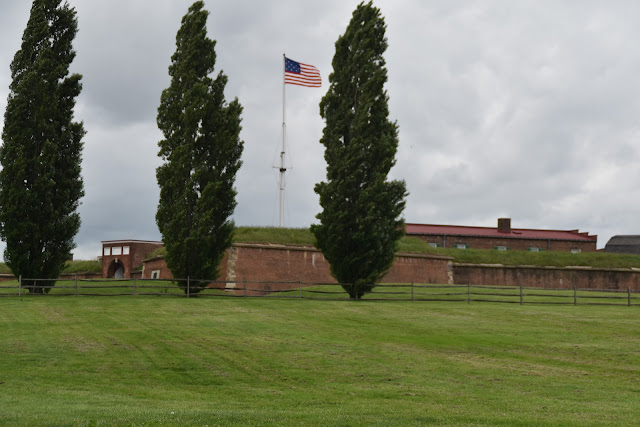A while back we had the opportunity to visit Fort McHenry in
Baltimore, Maryland. This historic site is perhaps best known for its role in
the War of 1812 where it successfully blockaded the entrance to the harbor from
attacking British warships. Its position
at the mouth of Baltimore Harbor and the range of its cannons was such that the
attackers could not get close enough to the city for their cannons to reach the
shore and cause damage.
Fort McHenry has also served as a hospital for returning soldiers
from WW1. During this use the Fort held
as many as 3,000 patient soldiers served by over 200 doctors, 300 nurses, 300 medical corpsmen,
and 100 civilian hospital aides.
The photos below give a brief picture of this facility and the artifacts it houses. The cannons are particularly impressive
given the metal working technology present in the early 1800’s when these were
originally made.
The sail boat shown is an actual privateer from the
time. Privateers were ships given
special permission by the President to attack and capture British and Irish
vessels that were attacking the USA. The
owners and crew of these ships were required to share the value of the capture
with the government but could keep their share. These privateers were an important part of
our defenses during the War of 1812.
Fort McHenry is also noted as the inspiration for Francis Scott Key to write the Star Spangled Banner. Key was being held captive on a British warship outside the harbor after trying to obtain the release of American prisoners. True to story he watched the heavy attack on the fort and the next morning he saw the flag still waving above the barricade and was inspired to write the epic poem.

 |
| some of the smaller cannon used to defend the Fort. |
 |
| Entrance to the main fort area. |
 |
| interior showing the barracks and armory, the round building. |
 |
| Inside the armory showing barrels of gunpowder. |
 |
| Officers quarters. |
 |
| Enlisted quarters. |
 |
| the cannon balls for the large guns are about 30" diameter. |
 |
| one of the large cannons that had a range capable of keeping the British ships at bay preventing them from bombarding the city of Baltimore. A crew of men would push this gun around on the steel tracks to aim it while another crew would use gears to crank the barrel up or down. |
 |
| Empty mounts for the large cannons. |
 |
| this site is a common school field trip and the students assist in folding the large flag that flys over the Fort. |
 |
| Privateer at dock |
















